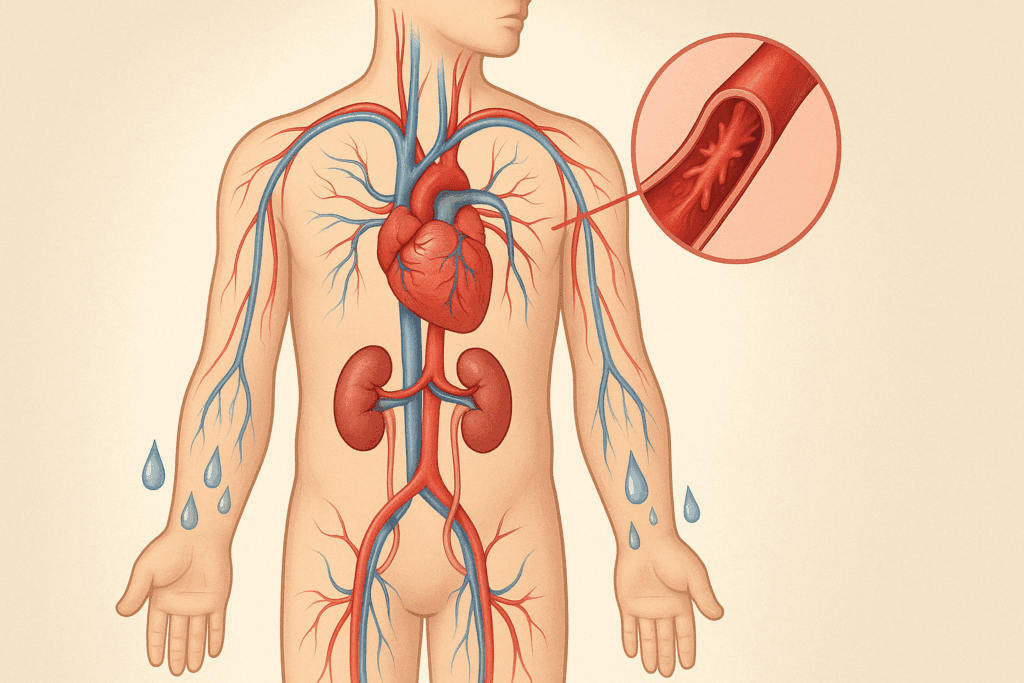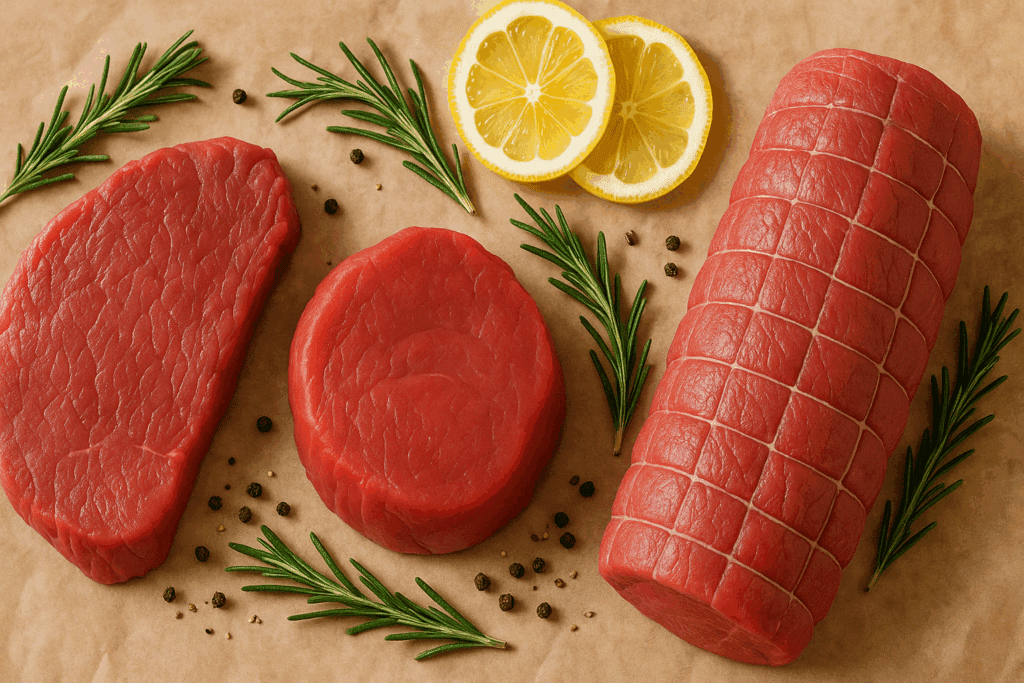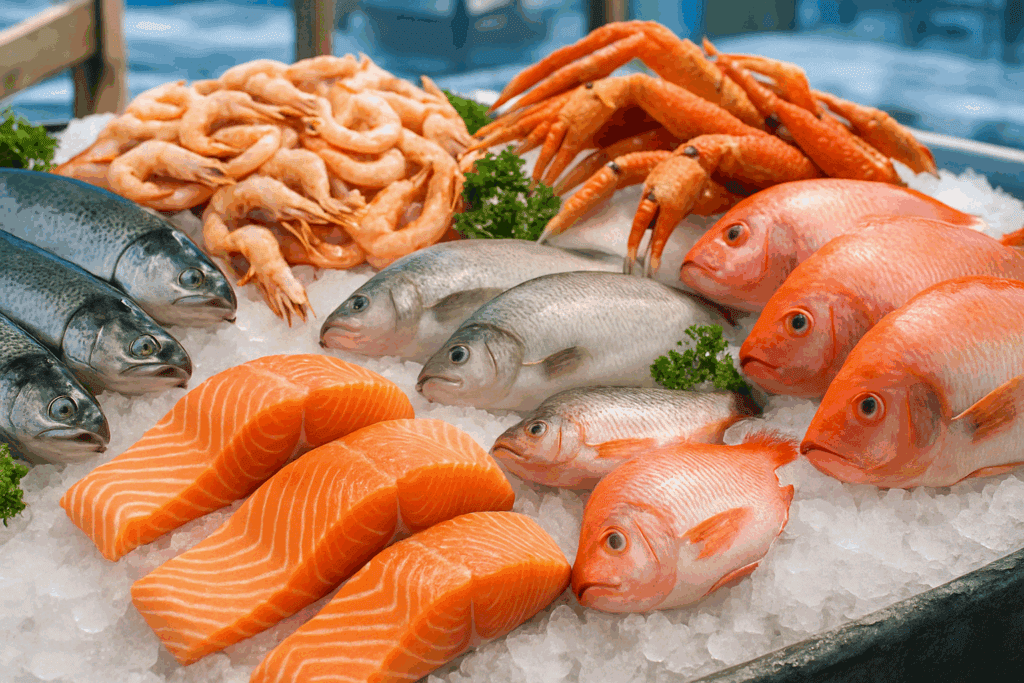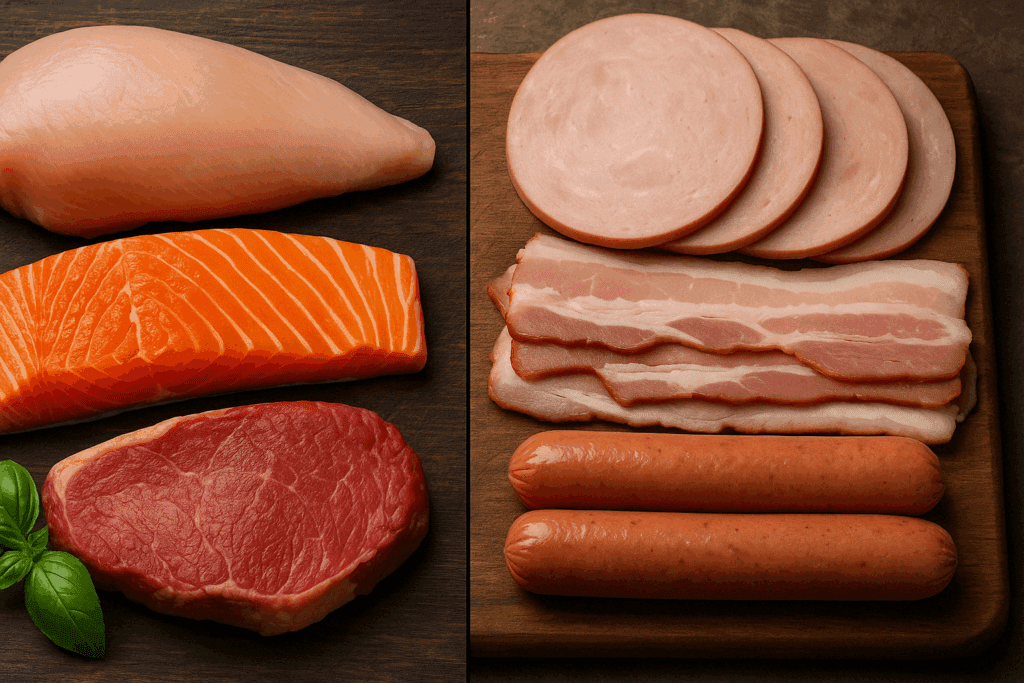Introduction: Why Sodium Content in Meat Matters for Your Health
Understanding which meat has the least salt is more than a matter of culinary curiosity; it is a cornerstone of preventive health. With cardiovascular disease remaining the leading cause of death globally, health-conscious individuals increasingly seek foods that contribute to lower blood pressure and overall heart wellness. Sodium, while an essential mineral, can quickly become detrimental when consumed excessively, leading to hypertension, stroke, and other serious health complications. Consequently, identifying low sodium meats has emerged as a vital component of a heart-healthy diet. Many people may not realize how much salt is naturally present in meat, especially when factoring in processing methods such as curing, smoking, and seasoning. By focusing on low salt meats, consumers can make informed dietary choices that support longevity, enhance energy levels, and preserve vascular health.
You may also like: 4 Ways to Have a Healthy Diet: Expert Tips Backed by Science for Better Nutrition and Long-Term Wellness
Despite the prevailing narrative around processed foods being the primary source of sodium, naturally occurring salt content in animal proteins can also pose a challenge. Lean cuts of fresh meat, unprocessed poultry, and certain seafood options can offer a savory, satisfying foundation for meals without tipping the scales on daily sodium intake. In this comprehensive guide, we will explore which meat has the least salt, examine the best options for low sodium meats, and provide practical strategies to incorporate low salt meats into your everyday eating patterns, all while maintaining delicious flavors and robust nutrition.
Understanding Sodium’s Role in the Body and Risks of Excess
Sodium plays a crucial role in maintaining fluid balance, transmitting nerve impulses, and facilitating muscle contractions. Without sufficient sodium, the body would struggle to maintain blood volume and pressure, resulting in dizziness, weakness, and even life-threatening conditions like hyponatremia. However, the modern diet has skewed heavily toward excessive sodium consumption, primarily due to processed foods, fast foods, and, surprisingly, hidden sources in common animal proteins.
Excess sodium intake exerts pressure on the kidneys, forcing them to work harder to excrete the mineral through urine. Over time, this can lead to kidney disease, fluid retention, and elevated blood pressure. Furthermore, high sodium intake damages the endothelium, the delicate lining of blood vessels, promoting atherosclerosis and significantly increasing the risk of heart attack and stroke. Thus, knowing which meat has the least salt is essential for anyone committed to managing their health proactively. Choosing low sodium meats not only helps in reducing daily salt intake but also aligns with broader efforts to stabilize blood pressure, enhance arterial elasticity, and minimize the risk of chronic disease.

Fresh vs. Processed Meats: A Crucial Distinction
When evaluating the salt content of meats, distinguishing between fresh and processed varieties is fundamental. Fresh meats refer to cuts that have not undergone any curing, smoking, or heavy seasoning processes. These include raw poultry, beef, pork, lamb, and certain fish selections. Generally, fresh meats offer significantly lower sodium levels compared to their processed counterparts.
Processed meats, on the other hand, encompass deli meats, sausages, bacon, hot dogs, and cured fish such as smoked salmon. These products are often brined or cured with substantial amounts of salt, preservatives, and flavoring agents, dramatically increasing their sodium content. For example, a three-ounce serving of fresh chicken breast may contain less than 70 milligrams of sodium, while the same portion of deli-sliced turkey breast can pack over 1,000 milligrams. Therefore, favoring fresh cuts is a foundational step in adhering to a low sodium meats strategy and answering the critical question of which meat has the least salt.

Beef: Finding Low Sodium Cuts
Beef can be part of a low sodium diet if chosen carefully. Fresh, unseasoned cuts such as eye of round roast, top sirloin, and tenderloin tend to have minimal sodium, typically under 75 milligrams per three-ounce cooked portion. Grass-fed beef may offer slightly lower sodium levels compared to conventional grain-fed varieties, along with higher concentrations of omega-3 fatty acids and conjugated linoleic acid (CLA), both of which confer cardiovascular benefits.
Opting for fresh ground beef labeled “no added salt” ensures that sodium remains within heart-healthy limits. Furthermore, when preparing beef at home, it is advisable to use herbs, spices, and citrus-based marinades instead of pre-packaged seasoning blends that often conceal high sodium levels. Emphasizing such practices makes it easier to incorporate beef as a source of low salt meats, preserving both taste and health benefits without compromise.
Poultry: A Versatile Low Sodium Option
Among all animal proteins, fresh poultry often ranks highest when considering which meat has the least salt. Skinless chicken breasts, turkey breasts, and thighs without added broth or seasoning are excellent choices. It is essential, however, to scrutinize labels carefully; many commercially available poultry products are “enhanced” with saline solutions to improve juiciness and shelf life, inadvertently boosting sodium content.
Choosing poultry labeled “air-chilled” or “no retained water” minimizes exposure to added salts. Fresh, organic, or pasture-raised chickens generally have a cleaner ingredient profile and lower sodium levels. Grilling, baking, or slow-cooking poultry with natural herbs such as rosemary, thyme, and basil can elevate flavor without sacrificing the low sodium objective. For individuals prioritizing low salt meats, poultry offers flexibility, affordability, and a nutritious, lean source of protein that aligns well with cardiovascular wellness goals.

Pork: Smart Choices for Sodium-Conscious Diets
Pork presents a more nuanced picture. While certain cuts like pork tenderloin and center-cut chops are relatively low in sodium when fresh, many pork products undergo curing processes that introduce substantial amounts of salt. Ham, bacon, sausages, and pork roasts seasoned with brine solutions can easily derail sodium reduction efforts.
For those committed to selecting low sodium meats, fresh pork tenderloin is a stellar option. With approximately 50 to 70 milligrams of sodium per three-ounce cooked portion, it rivals poultry in its heart-healthy potential. Cooking methods also matter; using dry rubs based on pepper, paprika, garlic, and onion powder (without added salt) can provide robust flavor without the sodium load associated with commercial seasoning blends. Ultimately, fresh pork can fit seamlessly into a diet centered around low salt meats, provided consumers remain vigilant about preparation and labeling.
Seafood: Navigating Natural Sodium and Processing Pitfalls
Seafood presents unique challenges and opportunities when seeking which meat has the least salt. Certain fresh fish and shellfish possess naturally occurring sodium levels that vary considerably. For instance, fresh salmon, trout, and tilapia offer relatively modest sodium content, typically between 50 to 80 milligrams per three-ounce serving.
Conversely, shellfish like shrimp, crab, and lobster naturally contain higher sodium concentrations even before processing. Adding to the complexity, many seafood products are treated with sodium-based preservatives or soaked in brines during packaging. For individuals targeting low sodium meats, choosing wild-caught, fresh fish over pre-packaged or frozen varieties reduces inadvertent sodium intake. Baking, broiling, or poaching fish with olive oil, lemon, and fresh herbs enhances flavor naturally, keeping seafood a valuable and delicious component of a low salt meats diet.

Lamb and Game Meats: Exploring Lesser-Known Options
Lamb and game meats such as venison, bison, and elk are often overlooked sources of low sodium meats. Fresh, unseasoned lamb cuts like loin chops and leg of lamb generally contain less than 70 milligrams of sodium per serving, making them competitive with more common poultry and beef options.
Game meats, prized for their leanness and rich nutritional profiles, often boast even lower sodium levels due to minimal processing. Venison, for example, typically provides under 60 milligrams of sodium per three-ounce portion. Choosing farm-raised game meats with minimal seasoning ensures alignment with low salt meats principles while introducing exciting variety into the diet. These meats also tend to be higher in iron and certain B vitamins, offering additional nutritional advantages alongside their low sodium benefits.
The Impact of Cooking Techniques on Sodium Content
Cooking methods significantly influence the final sodium content of meats. Grilling, baking, roasting, and broiling generally preserve the naturally low sodium levels of fresh meats when done without added salts. In contrast, marinating meats in commercial sauces, injecting brines, or using heavy seasoning blends can escalate sodium levels dramatically.
To maintain a focus on low sodium meats, home cooks should prioritize flavoring strategies that rely on acid (such as vinegar or citrus), umami-rich ingredients like mushrooms or tomatoes, and an array of aromatic spices. Dry rubs based on garlic powder, onion powder, cumin, coriander, and smoked paprika offer depth and complexity without resorting to sodium-heavy seasoning blends. Moreover, learning to appreciate the intrinsic flavors of high-quality meats diminishes the perceived need for excessive seasoning, reinforcing a sustainable approach to low salt meats consumption.
Reading Labels: A Vital Skill for Sodium Management
Navigating the meat aisle with an eye toward sodium reduction demands careful label reading. Products labeled “enhanced with a solution” or “seasoned for tenderness” often contain significant added sodium. Similarly, terms like “smoked,” “cured,” or “pickled” almost always signal high salt content.
Instead, shoppers should seek out meats labeled “no added salt,” “minimally processed,” or “all natural.” Nutrition facts panels provide essential data, with sodium content listed in milligrams per serving. Comparing brands and selecting products with the lowest sodium per serving enables consumers to uphold their commitment to low sodium meats consistently and confidently.
Practical Meal Ideas Featuring Low Sodium Meats
Incorporating low salt meats into daily meals need not be a bland or restrictive endeavor. Grilled chicken breasts marinated in lemon, garlic, and rosemary offer vibrant flavor with minimal sodium. Oven-roasted pork tenderloin rubbed with a medley of pepper, cumin, and oregano provides hearty satisfaction without excess salt.
Fresh salmon baked with dill, mustard, and a squeeze of lemon showcases how seafood can be both heart-healthy and delectable. Venison stir-fried with colorful vegetables, ginger, and a splash of low sodium soy sauce delivers savory richness while adhering to low sodium principles. By prioritizing fresh ingredients and culinary creativity, low sodium meats can become the centerpiece of dynamic, delicious meals that support better heart health.

Frequently Asked Questions (FAQ) About Low Sodium and Low Salt Meats
What factors contribute to the natural salt content in different meats?
Several biological factors determine the natural sodium content in meat, including the animal’s muscle composition, hydration levels, and diet. Meats with higher blood content, like certain game meats, often contain slightly more natural sodium. However, the distinction between which meat has the least salt is generally minor among fresh, unprocessed options. Environmental factors such as farming practices and feed types can also impact the sodium levels in meats. Consumers seeking truly low sodium meats should prioritize not only the species and cut but also the sourcing and farming methods behind their food.
How can marinating techniques reduce perceived saltiness without adding sodium?
One effective strategy for enhancing the flavor of low salt meats without increasing sodium is through the use of acid-based marinades. Ingredients like lemon juice, apple cider vinegar, and yogurt tenderize meat and add brightness, making the dish taste more flavorful despite minimal salt content. Herbs and spices such as thyme, rosemary, cumin, and smoked paprika can also build rich, layered flavors. Understanding which meat has the least salt allows you to pair these techniques intelligently, preserving heart health without sacrificing taste. Over time, developing a palate for naturally seasoned foods can retrain taste buds to prefer less salty dishes.
Are there emerging meat alternatives that provide low sodium options?
Yes, innovative developments in plant-based and cultured meats are beginning to offer compelling low sodium meats alternatives. Many newer plant-based meat substitutes are crafted to contain less salt compared to earlier versions that were often heavily seasoned to mimic traditional meat flavors. Lab-grown meats, still in early stages of commercialization, are being designed with control over sodium levels at the cellular cultivation stage. Exploring these options may become increasingly viable for those committed to finding which meat has the least salt while also reducing their environmental impact. Nonetheless, it’s essential to scrutinize product labels, as not all alternative proteins automatically qualify as low salt meats.
How does the salt content in exotic meats like ostrich and kangaroo compare?
Exotic meats like ostrich and kangaroo are gaining popularity among health enthusiasts seeking nutrient-dense, low sodium meats. Ostrich, for example, boasts high protein with very low fat and minimal sodium, often ranking favorably when considering which meat has the least salt. Kangaroo meat similarly offers low salt levels alongside high iron content, making it a practical choice for those focusing on heart-healthy eating. These meats also tend to be less processed than conventional options, which helps maintain their low salt profile. Their unique flavor profiles can add culinary excitement while supporting reduced sodium goals.
Can the aging process of meats affect their sodium content?
Interestingly, the aging process can subtly influence the sodium perception of meat without necessarily changing its actual salt content. Dry-aged meats undergo moisture loss, which can concentrate the natural flavors, including a heightened sense of saltiness, even when no sodium is added. For those analyzing which meat has the least salt, it is important to differentiate between perceived and actual sodium levels. Dry-aged cuts might taste saltier but still align with low sodium meats standards if unseasoned. Consumers seeking authentic low salt meats should inquire about both seasoning practices and whether the meat has been aged.
What role does meat sourcing play in sodium content management?
Sourcing plays a critical role in ensuring that meats remain low in sodium. Animals raised on natural, unprocessed diets with minimal interventions tend to produce meats that support a low sodium lifestyle. Farmers who avoid injecting meats with saline solutions or chemical preservatives contribute to maintaining low salt meats integrity. Understanding farm practices and asking specific sourcing questions can help consumers identify which meat has the least salt and aligns with their health goals. Ethical sourcing also often correlates with better nutrient profiles overall, enhancing both personal and environmental health outcomes.
Are there seasonal variations in the sodium levels of meats?
While the intrinsic sodium content of fresh meats remains relatively stable, seasonal farming practices can indirectly affect salt levels, especially in grass-fed livestock. For instance, changes in pasture composition across seasons may subtly influence an animal’s mineral intake, which can have a minor effect on meat nutrients, including sodium. Understanding these seasonal nuances can refine the search for low sodium meats, especially for discerning consumers looking for the cleanest sources. Although these variations are typically minimal, chefs and nutritionists who prioritize which meat has the least salt often develop relationships with local farmers to optimize seasonal advantages. Greater awareness of seasonal cycles can offer another layer of sophistication in building a low salt meats diet.
How does portion size influence sodium intake when consuming low sodium meats?
Portion control remains a pivotal factor in managing overall sodium intake, even when selecting low sodium meats. A larger serving of an otherwise low salt meat could inadvertently lead to higher sodium consumption simply by volume. Understanding not just which meat has the least salt but also how much of it is consumed enables better dietary management. Nutritionists often recommend balancing meat portions with high-potassium foods such as leafy greens, sweet potatoes, and avocados to mitigate sodium’s potential vascular effects. Strategic portioning allows for the enjoyment of diverse low salt meats without compromising sodium goals.
Are there cooking techniques that inadvertently increase the sodium content in meats?
Absolutely, cooking techniques can unintentionally elevate sodium exposure, even when starting with low sodium meats. Basting meats with commercial broths, using salted butter, or incorporating high-sodium sauces during cooking can offset the benefits of choosing meats that initially have minimal salt. When assessing which meat has the least salt for a meal, it is equally vital to maintain control over every cooking component. Opting for homemade broths, unsalted cooking fats, and fresh herb-based sauces ensures the final dish remains aligned with low salt meats principles. Mastering these techniques enhances not only the health profile but also the culinary satisfaction of each meal.
What future trends might influence access to lower sodium meat products?
Future trends in food science and agricultural technology promise to make low sodium meats even more accessible and varied. Precision livestock farming, for example, could enable better control over animals’ mineral intakes, optimizing for lower natural sodium levels without sacrificing meat quality. Advances in bioengineering may soon allow for designer meats tailored specifically to meet low salt meats criteria. Furthermore, consumer demand for transparency and clean labeling is pushing meat producers to prioritize minimal processing, directly supporting those seeking which meat has the least salt. As awareness around sodium and heart health continues to rise, the market is likely to offer increasingly sophisticated, health-conscious options for savvy consumers.

Conclusion: Choosing Low Sodium and Low Salt Meats for a Healthier Future
Selecting which meat has the least salt is a nuanced but achievable goal that can significantly impact overall wellness. By prioritizing low sodium meats such as fresh poultry, beef, pork tenderloin, wild-caught fish, and game meats, individuals can dramatically reduce their daily sodium intake without sacrificing flavor or nutrition. Cooking methods that emphasize natural ingredients and label vigilance at the point of purchase further empower consumers to make informed choices.
Integrating low salt meats into the diet supports better blood pressure control, enhanced cardiovascular function, and reduced risk of chronic diseases. Moreover, the commitment to low sodium eating cultivates a deeper appreciation for natural flavors and culinary craftsmanship. As health-conscious eating continues to gain prominence, understanding which meat has the least salt becomes an indispensable skill, bridging the gap between informed nutrition and vibrant living. Armed with the insights shared in this guide, readers can confidently navigate their dietary choices, embracing low sodium meats as a delicious, nourishing cornerstone of long-term heart health.
Was this article helpful? Don’t let it stop with you. Share it right now with someone who needs to see it—whether it’s a friend, a colleague, or your whole network. And if staying ahead on this topic matters to you, subscribe to this publication for the most up-to-date information. You’ll get the latest insights delivered straight to you—no searching, no missing out.
Further Reading:
Low-Sodium Diet: Benefits, Food Lists, Risks and More
Low Sodium Diet For Heart Health: Foods To Include And Avoid


